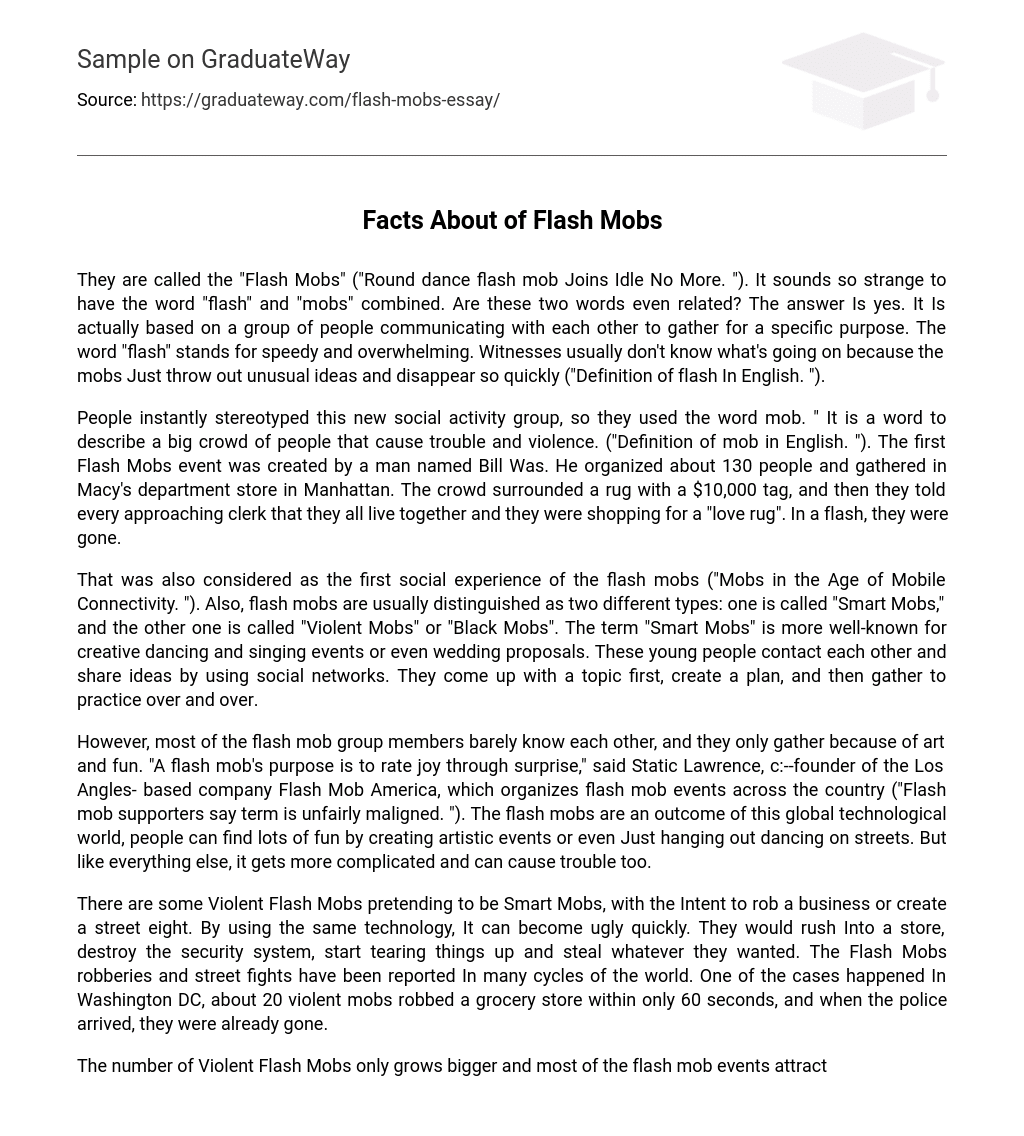The groups known as “Flash Mobs” (“Round dance flash mob Joins Idle No More.”) combine the words “flash” and “mobs” to describe their gatherings. Despite the seemingly strange combination, there is a connection between these two terms. These people come together to communicate and unite for a specific purpose. The term “flash” signifies speed and the overwhelming nature of these gatherings. Onlookers often find themselves perplexed as the mobs swiftly introduce unconventional ideas before disappearing shortly after (“Definition of flash In English.”).
People immediately labeled this new social activity group as a “mob,” referring to a large group of people causing trouble and violence. The concept of a flash mob originated with Bill Was, who organized around 130 individuals to meet at Macy’s department store in Manhattan. As a group, they gathered around a rug with a price tag of $10,000 and deceived the store clerks by claiming they all lived together and were shopping for a “love rug.” In an instant, they disappeared.
According to “Mobs in the Age of Mobile Connectivity,” flash mobs are seen as the initial social experience. They are categorized into two types: “Smart Mobs,” known for creative dancing and singing events, and “Violent Mobs” or “Black Mobs.” Young people utilize social networks to connect, exchange ideas, choose a topic, devise a plan, and rehearse repeatedly.
However, the majority of flash mob participants have little knowledge of each other and only come together for the sake of art and enjoyment. Static Lawrence, co-founder of Flash Mob America, a company based in Los Angeles that coordinates flash mob events nationwide, stated that the purpose of a flash mob is to spread joy through surprises (“Flash mob supporters say term is unfairly maligned.”). In this technologically advanced world, flash mobs have become a result; people are able to have lots of fun by creating artistic events or simply gathering on the streets to dance. Nevertheless, like anything else, it can also become more intricate and lead to trouble.
There are instances of Violent Flash Mobs masquerading as Smart Mobs, aiming to perpetrate business robberies or incite street chaos. By leveraging the same technology, the situation can escalate rapidly. These mobs would abruptly enter a store, dismantle the security system, vandalize the premises, and pilfer whatever they desired. Reports of Flash Mob robberies and street brawls have emerged worldwide. In Washington DC, for instance, approximately 20 violent mobs swiftly robbed a grocery store in just 60 seconds, and by the time the police arrived, the mobs had already vanished.
The number of Violent Flash Mobs is continually increasing, and many of these events are able to attract people quickly and effectively. As a result, numerous companies have recognized the benefits of creating their own flash mob events. Advertising agencies have experimented with various methods to hire flash mobs and showcase the products they want to advertise. These flash mobs then treat these projects as their regular assignments, hence being referred to as “paid flash mobs.” Companies are typically willing to offer a substantial payment for successful flash mob events, as they have a much greater impact on audiences compared to traditional commercials.





